#Patrick Lucey
Text
Wisconsin Governor DILFs



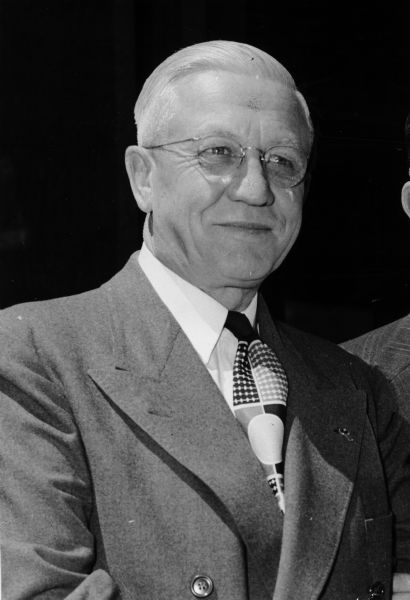



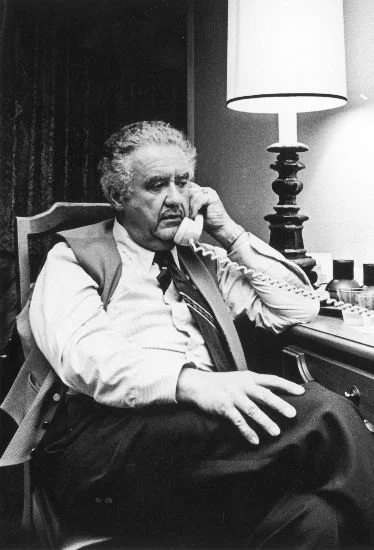

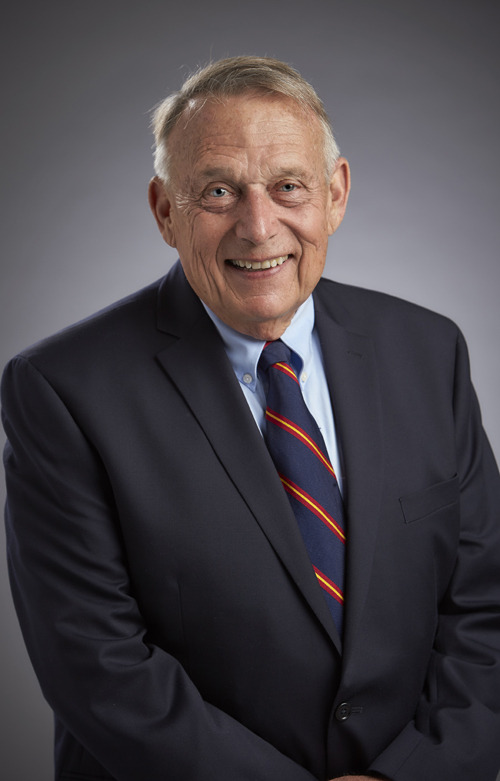


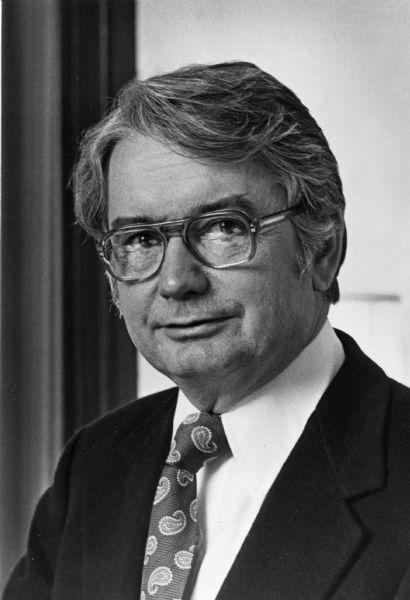



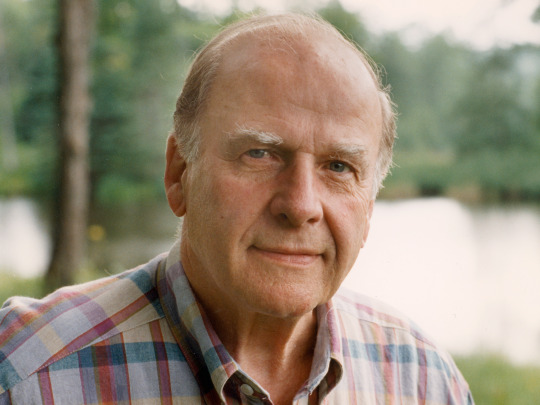
Tony Evers, Walter Samuel Goodland, Scott McCallum, Oscar Rennebohm, Tony Earl, John Reynolds, Julius P. Heil, Lee S. Dreyfuss, Jim Doyle, Martin J. Schreiber, Vernon Wallace Thomson, Walter J. Kohler Jr., Patrick Lucey, Scott Walker, Tommy Thompson, Warren P. Knowles, Gaylord Nelson
#Tony Evers#Walter Samuel Goodland#Scott McCallum#Oscar Rennebohm#Tony Earl#John Reynolds#Julius P. Heil#Lee S. Dreyfuss#Jim Doyle#Martin J. Schreiber#Vernon Wallace Thomson#Walter J. Kohler Jr.#Patrick Lucey#Scott Walker#Tommy Thompson#Warren P. Knowles#Gaylord Nelson#GovernorDILFs
7 notes
·
View notes
Photo

Congratulations to Ms. Delaney and Green School Committee represented by Sam Doody Lucey, Ryan Molloy, Mark Moran, Patrick Maguire and Ogie Mehigan who attended An Taisce’s Green Schools National Awards in Athlone yesterday. St Michael’s College were presented with the flag for Global Citizenship Litter and Waste and in addition, won the Regional Award for all their work on this theme! A huge achievement for the school. Well done to all!
0 notes
Photo
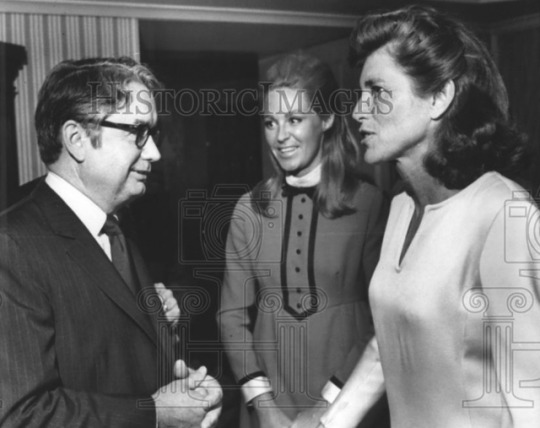
October 7, 1970 - Joan and Eunice talk to Patrick Lucey, Governor of Wisconsin, during a fundraising cocktail party.
#1970s#1970#Joan Kennedy#Joan Bennett Kennedy#eunice kennedy#eunice kennedy shriver#Eunice Shriver#Patrick Lucey#The Kennedys#Kennedy
20 notes
·
View notes
Text
Ginsburg honors longtime Wisconsin Supreme Court justice
Several hundred people packed the state Capitol rotunda for the ceremony. The crowd gave Abrahamson a standing ovation at the end of Ginsburg's video. The 85-year-old Abrahamson rose from her wheelchair and clapped in acknowledgment.
MADISON, Wis. (AP) — U.S. Supreme Court Justice Ruth Bader Ginsburg praised Shirley Abrahamson as an inspiration Tuesday in a video tribute as the legal community heralded Wisconsin’s longest-serving and first female state Supreme Court justice during a farewell ceremony.
Ginsburg called the retiring Abrahamson “the very best, the most courageous and sage, the least self-regarding” jurist she has…
View On WordPress
#Gov. Patrick Lucey#Judge Diane Sykes#Justice Shirley Abrahamson#Ruth Bader Ginsburg#Wisconsin Supreme Court
0 notes
Text
‘aphy tell us more about your devil only here in the summer fic!’ well, magnus loathes and despises former wisconsin governor Patrick Lucey bc patty is the reason that julia died
#.aphelion#.txt#patrick lucey was fiscally conservative which means im legally bound to kick his ass
1 note
·
View note
Text
Native American Series - A Climate of Protest in the 1970′s and 80′s
Our archival holdings become more robust in the later half of the 20th century. Beginning in the 1970′s, both Native students and Native members of the Madison community took part in a steadily increasing number of public protests and acts of civil disobedience.
In 1972, hundreds marched from Keshena, Wisconsin to Madison to protest the sale of Menominee land despite treaty restrictions. Pictured below is the culmination of a ten day march from Keshena to Madison, Columbus Day, October 12, 1972.
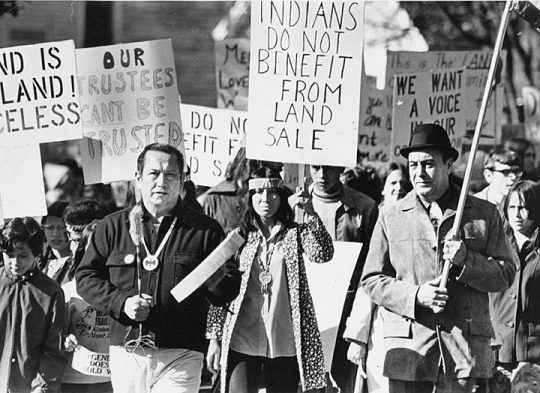
Image: Native American protest against Menominee land sale, S00452
The Menominee community remained central to protest actions in the 1970′s. When two Menominee tribal members were murdered by Sheriff Kenneth Fish on February 2nd, 1976, large groups of activists marched on the capitol to protest then Governor Patrick Lucey’s light handling of the killing. The activists are pictured below in the State Capitol building. The Archives has several photographs of Native protests during this period.

Image: Menominee protest at the State Capitol, S00459
In 1973, Native issues on campus came to a head when the University moved to close the Afro-American and Native American Cultural Centers (citing funding issues that many students found unsatisfactory). Pictured below is part of a series of protests throughout 1973 to try and save the Cultural Centers.

Image: Cultural Centers protest, S00710
The climate for Natives in Wisconsin remained tense throughout the 1970′s and 1980′s. The fishing rights controversy raging in nearby Northern Wisconsin spurred a number of protests on campus (For a very brief introduction on the Spearfishing Treaty Controversy, Milwaukee Public Museum’s summary).

This is the fourth post in a continuing series where we will explore the archive’s collection on Native Americans and consider how we, as an archive, can do better in preserving this history.
—-
This post was originally drafted by former Archives Student Assistant Emily Lobenstein and updated by former Archives Student Assistant Dani Fulwiler.
16 notes
·
View notes
Text
[T]he "digit veto" was first used by Governor Patrick Lucey in 1973. In appropriation for $25 million, he vetoed the digit 2, resulting in an appropriation of $5 million. Just two years later, Lucey introduced the "editing veto". In this instance, the word "not" was removed in the phrase "not less than 50 percent", thus resulting in the opposite effect than desired by the legislature.
12 notes
·
View notes
Text
KSP Weekly: Lunar Water

Welcome to KSP Weekly! A study published online this week in the journal Proceedings of the National Academy of Sciences provides direct and definitive evidence for surface-exposed water ice in the polar regions on the Moon.
The team of researchers — led by Shuai Li of the University of Hawaii and Brown University — peered at suspected icy patches using an instrument called the Moon Mineralogy Mapper (M3), which flew aboard Chandrayaan-1, India's first mission to the Moon, and provided the first mineralogical map of the lunar surface. The Moon Mineralogy Mapper used the near-infrared spectrum to pinpoint the signature activity of ice molecules interacting with infrared light. This helped the scientists to distinguish the frozen water from other types of ice or water in a different form — such as bound up in minerals — and they identified ice deposits dwelling in permanent shadows at the Moon's north and south poles.
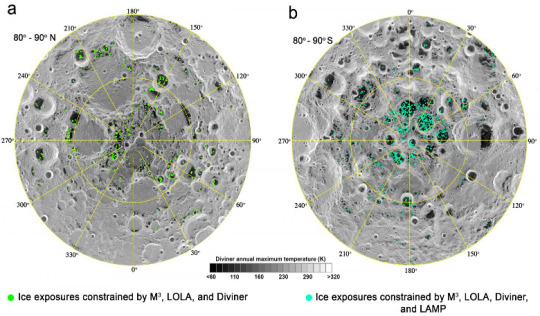
The abundance and distribution of ice on the Moon are distinct from those on other airless bodies in the inner solar system such as Mercury and Ceres, which may be associated with the unique formation and evolution process of our Moon. The Moon's surface is continuously bombarded by meteorites and micrometeorites. Many, if not most, of these impactors contain water ice, and the lunar craters show that many of these were very large objects. Any ice which survived impact would be scattered over the lunar surface. Most would be quickly vaporized by sunlight and lost to space, but some would end up inside the permanently shadowed craters, either by directly entering the crater or migrating over the surface as randomly moving individual molecules which would reach the craters and freeze there. Once inside the crater, the ice would be relatively stable, so over time the ice would collect in these "cold traps," and be buried to some extent by meteoritic gardening. Correspondingly, most of the ice was found in surface craters that are never touched by direct sunlight, and where temperatures hover around minus 157 degrees Celsius.
This discovery has several implications. For instance, it can provide scientists with valuable clues about the composition and activity of the Moon and other icy bodies in the inner solar system. Beyond the scientifically intriguing aspects, deposits of ice on the Moon would have many practical aspects for future manned lunar exploration, as it provides significant impetus for future international landings in the polar regions to drill and return samples of this ice. Ice deposits in significant quantities on the Moon could also provide resources for future lunar bases, or could also potentially be an important resource for space travel; mining lunar ice and converting it to rocket fuel could extend the reach of future missions to deep space.
[Development news start here]
First of all, we want to thank everyone who participated in our poll which helped decide which color pattern the revamp of EVA Space Suits will have. We received many responses and there was a clear preference, so without further ado, here are the results:
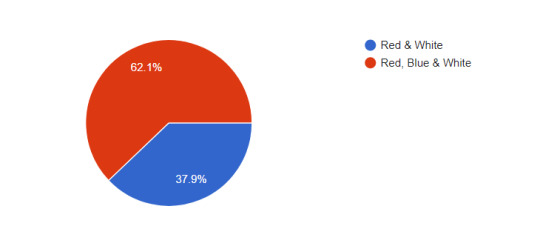
The red, blue and white suits were clearly the favorite, and as such they are now part of the Kerbals’ wardrobe. While performing this poll, we also received tons of constructive feedback on the revamped EVA Space Suit. The art team is assessing the feedback and we will show the final version in a future update.

As part of the 1.5 Update agenda, we have also been looking at other parts that are getting a well-deserved refurbishment. One such parts is the MK1 Command Pod, which just got out of the VAB, fully revitalized and optimized. We're taking this opportunity to fix a few small issues with the original Mk1 pod. Attachment nodes will be adjusted so that the pod nests correctly on a 1.25m stack, and the top has been tweaked to be exactly 0.625m in diameter. The MK1 Pod will keep all its features and specifications, but with this new look it will make your first rockets look sleek and modern. Just as with the other parts we have shown off, the goal of this revamps isn’t to reinvent the wheel, but to give the part catalogue a more cohesive and sleek look, as well as to optimize the texture maps and the model geometry to reduce load times. Here is a GIFs to give you a full 3D look of the MK1 Pod.
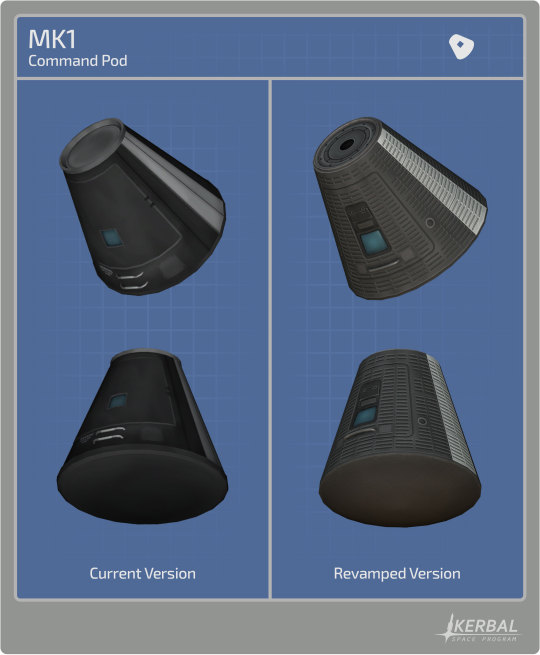
Click here for the high res image.
Aside from art-related tasks, the team also started to work on improving and expanding the functionality of the Search Bar in the Mission Builder. Now whenever you make an inquiry, the Search Bar will check for matches on both the Toolbar and the Canvas. To facilitate the search process the system will create two lists; one for toolbar results and other for matches within the canvas. You will then be able to select your search results and it will highlight the matching nodes on the canvas and focus the camera on them. You can also drag a search result out onto the canvas and it will copy the existing node.
[KSP Vault]
Last week, DasValdez got ULA systems engineer Patrick Moore to talk about the Parker Solar Probe mission and Delta IV Heavy rocket while he provided realistic flight commentary as he launched his own “Deltish IV” rocket carrying a “Parker Sorta Probe”, built using stock parts in Kerbal Space Program. Watch it here!
youtube
The Mission of the Week, Jeb’s Monument, a very challenging mission that will have you transporting a huge Jeb Statue towards Duna. Piloting, spacecraft design, docking, re-entry, precision landing, and efficiency, this mission will put your skills to the test! Get it here: https://bit.ly/2MIYNgN

Have you seen cool KSP-related content that you consider worth highlighting? Share it with us and help us give content creators more exposure. :)
Remember that you can also share and download missions on Curse, KerbalX, the KSP Forum and the KSP Steam Workshop.
That’s it for this week. Be sure to join us on our official forums, and don’t forget to follow us on Twitter and Facebook. Stay tuned for more exciting and upcoming news and development updates!
Happy launchings!
*Information Source:
(n.d.). Retrieved from https://nssdc.gsfc.nasa.gov/planetary/ice/ice_moon.html
David, L. (2018, August 22). Discovery of Water Ice on the Moon Thrills Lunar Scientists. Retrieved from https://www.space.com/41590-moon-water-ice-discovery-thrills-researchers.html
Li, S., Lucey, P. G., Milliken, R. E., Hayne, P. O., Williams, E. F., Hurley, D. M., & Elphic, R. C. (2018, August 15). Direct evidence of surface exposed water ice in the lunar polar regions. Retrieved from http://www.pnas.org/content/early/2018/08/14/1802345115
Luntz, S. (2018, August 21). Scientists Have Discovered Water Ice On The Surface Of The Moon. Retrieved from https://www.iflscience.com/space/scientists-discover-best-evidence-yet-for-water-ice-on-the-lunar-surface/
Weisberger, M. (2018, August 21). Ice on the Moon! Frozen Reserves Detected at the Poles in a Lunar First. Retrieved from https://www.livescience.com/63387-ice-on-the-moon.html
10 notes
·
View notes
Text
Who Are The Two Republicans Running For President
New Post has been published on https://www.patriotsnet.com/who-are-the-two-republicans-running-for-president/
Who Are The Two Republicans Running For President
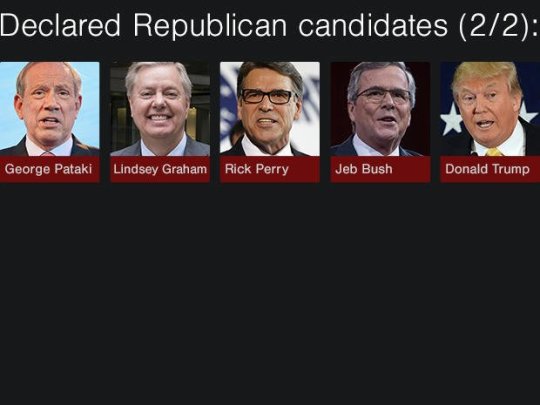
: Andrew Jackson Vs Henry Clay Vs William Wirt
Two Republicans, Nine Thousand Democrats Running for President
Democratic-Republican Andrew Jackson was reelected in 1832 with 688,242 popular votes to 473,462 for National-Republican Henry Clay and 101,051 for Anti-Masonic candidate William Wirt. Jackson easily carried the Electoral College with 219 votes. Clay received only 49, and Wirt won the seven votes of Vermont. Martin Van Buren won the vice presidency with 189 votes against 97 for various other candidates.
The spoils system of political patronage, the tariff, and federal funding of internal improvements were major issues, but the most important was Jacksons veto of the rechartering of the Bank of the United States. National-Republicans attacked the veto, arguing that the Bank was needed to maintain a stable currency and economy. King Andrews veto, they asserted, was an abuse of executive power. In defense of Jacksons veto, Democratic-Republicans labeled the Bank an aristocratic institutiona monster. Suspicious of banking and of paper money, Jacksonians opposed the Bank for giving special privileges to private investors at government expense and charged that it fostered British control of the American economy.
The Anti-Masons convened the first national presidential nominating convention in Baltimore on September 26, 1831. The other parties soon followed suit, and the convention replaced the discredited caucus system of nomination.
: Benjamin Harrison Vs Grover Cleveland
In 1888 the Democratic Party nominated President Grover Cleveland and chose Allen G. Thurman of Ohio as his running mate, replacing Vice President Thomas Hendricks who had died in office.
After eight ballots, the Republican Party chose Benjamin Harrison, former senator from Indiana and the grandson of President William Henry Harrison. Levi P. Morton of New York was the vice-presidential nominee.
In the popular vote for president, Cleveland won with 5,540,050 votes to Harrisons 5,444,337. But Harrison received more votes in the Electoral College, 233 to Clevelands 168, and was therefore elected. The Republicans carried New York, President Clevelands political base.
The campaign of 1888 helped establish the Republicans as the party of high tariffs, which most Democrats, heavily supported by southern farmers, opposed. But memories of the Civil War also figured heavily in the election.
Northern veterans, organized in the Grand Army of the Republic, had been angered by Clevelands veto of pension legislation and his decision to return Confederate battle flags..
Two Republicans One Backed By Trump Head To Runoff In Texas Special Congressional Election
A plane flies across the sky beside the U.S. Capitol dome in Washington, U.S., January 15, 2020. REUTERS/Tom Brenner/File Photo
WASHINGTON, May 2 – A Texas Republican backed by former President Donald Trump has advanced to a runoff election to fill a U.S. House of Representatives vacancy left by the death of her husband, while Democrats were shut out of the contest.
Susan Wright, whose husband Ron Wright in February became the first sitting member of Congress to die of COVID-19, was the top vote-getter on Saturday in a crowded field of 23 candidates vying to represent the state’s 6th Congressional District. read more
Wright was headed to a runoff against another Republican in the Dallas-Fort Worth suburbs, a longtime Republican-held district.
Democrats had hoped to pick up the seat to expand their slim House majority. But they conceded Sunday they had missed the chance.
Wright received 19.2% of the vote, followed by former military fighter pilot Jake Ellzey, another Republican, who drew 13.8%, according to the Texas secretary of state’s office. Just 354 votes and less than half a percentage point separated Ellzey from Democrat Jana Lynne Sanchez, who was in third place with 13.4%.
“Democrats have come a long way toward competing in Texas, but we still have a long way to go,” Sanchez, the granddaughter of Mexican immigrants, said in a statement. “Two Republicans will be competing to represent this congressional district.”
Us Election 2020: Why Republicans Are Fighting In Georgia
The presidential election is over, and President-elect Joe Biden will be heading to the White House in January. But in Georgia, there are two more key political battles still under way.
All of the so-called battleground states have certified their results for the presidency, but next month, the outcomes of two critical US Senate races will determine the upper chamber’s balance of power.
Early voting began on Monday in the southern state for these 5 January run-off races that will shape Mr Biden’s first term.
Here’s what you need to know.
: James K Polk Vs Henry Clay Vs James Birney

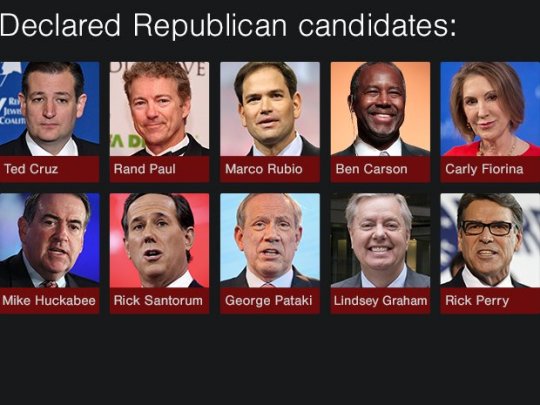
The election of 1844 introduced expansion and slavery as important political issues and contributed to westward and southern growth and sectionalism. Southerners of both parties sought to annex Texas and expand slavery. Martin Van Buren angered southern Democrats by opposing annexation for that reason, and the Democratic convention cast aside the ex-president and front-runner for the first dark horse, Tennessees James K. Polk. After almost silently breaking with Van Buren over Texas, Pennsylvanias George M. Dallas was nominated for vice president to appease Van Burenites, and the party backed annexation and settling the Oregon boundary dispute with England. The abolitionist Liberty Party nominated Michigans James G. Birney. Trying to avoid controversy, the Whigs nominated anti-annexationist Henry Clay of Kentucky and Theodore Frelinghuysen of New Jersey. But, pressured by southerners, Clay endorsed annexation even though he was concerned it might cause war with Mexico and disunion, thereby losing support among antislavery Whigs.
Enough New Yorkers voted for Birney to throw 36 electoral votes and the election to Polk, who won the Electoral College 170-105 and a slim popular victory. John Tyler signed a joint congressional resolution admitting Texas, but Polk pursued Oregon and then northern Mexico in the Mexican-American War, aggravating tension over slavery and sectional balance and leading to the Compromise of 1850.
Us Ambassador To The United Nations
For more information on Haley’s tenure as U.S. ambassador to the United Nations, please visit: Nikki Haley .
President Donald Trump announced Haley as his nominee for U.N. ambassador on November 23, 2016. On January 24, 2017, the Senate voted 96-4 to confirm Haley as U.S. ambassador to the U.N. Sens. Bernie Sanders , Chris Coons , Tom Udall , and Martin Heinrich were the only senators to vote against her confirmation.
On October 9, 2018, Haley announced that she would resign from the position at the end of the year to take a break from public service. She formally resigned on December 31, 2018.
Whos Running In Georgias Us Senate Election Runoffs
Georgia will hold two special elections Jan. 5, with the results ultimately determining which party will control the U.S. Senate.
In the southeastern state of Georgia, a political candidate in a primary or general election must earn more than 50% of the votes. If no one in the race meets that threshold, the top two vote-getters enter into a runoff election.
One runoff race features incumbent Sen. David Perdue, a Republican who received 49.7% of the vote on Nov. 3, and Democratic challenger Jon Ossoff, who received 47.9%.
The other runoff race is for a seat vacated by retiring Republican Sen. Johnny Isakson. Sen. Kelly Loeffler, a Republican who received 25.9% of the vote on Nov. 3, will face the Rev. Raphael Warnock, a Democrat who received 32.9%.
Republicans need to win just one of the elections to retain control of the U.S. Senate. Democrats need to win both seats to force a 50-50 Senate. Vice President-elect Kamala Harris would then be needed to cast tie-breaking votes when needed.
Here is a look at the candidates:
REPUBLICANS
Kelly Loeffler
David Perdue
DEMOCRATS
Jon Ossoff
Raphael Warnock
: Ronald Reagan Vs Jimmy Carter Vs John B Anderson
In 1980 President Jimmy Carter was opposed for the Democratic nomination by Senator Edward Kennedy of Massachusetts in ten primaries. But Carter easily won the nomination at the Democratic convention. The party also renominated Walter Mondale for vice president.
Ronald Reagan, former governor of California, received the Republican nomination, and his chief challenger, George Bush, became the vice-presidential nominee. Representative John B. Anderson of Illinois, who had also sought the nomination, ran as an independent with Patrick J. Lucey, former Democratic governor of Wisconsin, as his running mate.
The two major issues of the campaign were the economy and the Iran Hostage Crisis. President Carter seemed unable to control inflation and had not succeeded in obtaining the release of American hostages in Tehran before the election.
Reagan won a landslide victory, and Republicans also gained control of the Senate for the first time in twenty-five years. Reagan received 43,904,153 popular votes in the election, and Carter, 35,483,883. Reagan won 489 votes in the Electoral College to Carters 49. John Anderson won no electoral votes, but got 5,720,060 popular votes.
: William Henry Harrison Vs Martin Van Buren
Trump Campaign Running Two Candidates For President In Wisconsin | Rachel Maddow | MSNBC
Aware that Van Burens problems gave them a good chance for victory, the Whigs rejected the candidacy of Henry Clay, their most prominent leader, because of his support for the unpopular Second Bank of the United States. Instead, stealing a page from the Democratic emphasis on Andrew Jacksons military exploits, they chose William Henry Harrison, a hero of early Indian wars and the War of 1812. The Whig vice-presidential nominee was John Tyler, a onetime Democrat who had broken with Jackson over his veto of the bill rechartering the Second Bank.
Studiously avoiding divisive issues like the Bank and internal improvements, the Whigs depicted Harrison as living in a log cabin and drinking hard cider. They used slogans like Tippecanoe and Tyler too, and Van, Van, Van/Van is a used-up man, to stir voters. Harrison won by a popular vote of 1,275,612 to 1,130,033, and an electoral margin of 234 to 60. But the victory proved to be a hollow one because Harrison died one month after his inauguration. Tyler, his successor, would not accept Whig economic doctrine, and the change in presidential politics had little effect on presidential policy.
: Thomas Jefferson Vs John Adams
The significance of the 1800 election lay in the fact that it entailed the first peaceful transfer of power between parties under the U.S. Constitution. Republican Thomas Jefferson succeeded Federalist John Adams. This peaceful transfer occurred despite defects in the Constitution that caused a breakdown of the electoral system.
During the campaign, Federalists attacked Jefferson as an un-Christian deist, tainted by his sympathy for the increasingly bloody French Revolution. Republicans criticized the Adams administrations foreign, defense and internal security policies; opposed the Federalist naval buildup and the creation of a standing army under Alexander Hamilton; sounded a call for freedom of speech, Republican editors having been targeted for prosecution under the Alien and Sedition Acts and denounced deficit spending by the federal government as a backhanded method of taxation without representation.
Although the Republicans in the same election had won a decisive majority of 65 to 39 in the House, election of the president fell to the outgoing House, which had a Federalist majority. But despite this majority, two state delegations split evenly, leading to another deadlock between Burr and Jefferson.
: George Washington Unopposed
George Washington was the first president of the United States.
The first presidential election was held on the first Wednesday of January in 1789. No one contested the election of George Washington, but he remained reluctant to run until the last minute, in part because he believed seeking the office would be dishonorable. Only when Alexander Hamilton and others convinced him that it would be dishonorable to refuse did he agree to run.
The Constitution allowed each state to decide how to choose its presidential electors. In 1789, only Pennsylvania and Maryland held elections for this purpose; elsewhere, the state legislatures chose the electors. This method caused some problems in New York, which was so divided between Federalists who supported the new Constitution and Antifederalists who opposed it that the legislature failed to choose either presidential electors or U.S. senators.
Before the adoption of the Twelfth Amendment, there was no separate ballot for president and vice president. Each elector cast two votes for president. The candidate with the largest number of electoral votes won the presidency, and the runner-up became vice president.
‘americans Will See The Current Two Options Are Not The Choice’
Jade Simmons is a multi-hyphenated woman. A former beauty queen, professional concert pianist, motivational speaker, rapper, mother, and ordained pastor.
As she puts it, she is an unconventional candidate, “but these are unconventional times”.
“This seemed to me to be a time when we couldn’t afford to do business as usual,” she says. “I’m the daughter of a civil rights activist, and the way my father raised me was that if you see voids, if you see injustices, you need to ask yourself if that might be you that needs to be leaning in.”
She says her goal is to create equal access to opportunity, through economic, educational and criminal justice reform. And in that spirit, she’s aiming to run “the least expensive campaign in the history of our nation”.
“We think it’s abominable that it costs now almost a billion dollars to run for president when the qualifications are that you are 35 years old, a US-born resident, and have lived here 14 years,” says Ms Simmons. “We’d rather spend that money on helping people.”
Full coverage of the US election
While the Republican and Democratic nominees will be on the ballot in all states, independents must meet an array of state deadlines and access requirements.
“I know it sounds wild, given the history of independents! We believe that if we stay standing long enough, there’s still some more disruption coming in – that most Americans are going to see that the current two options are not the choice.
: Franklin D Roosevelt Vs Alfred M Landon


In 1936 the Democratic Party nominated President Franklin D. Roosevelt and Vice President John Nance Garner. The Republican Party, strongly opposed to the New Deal and big government, chose Governor Alfred M. Landon of Kansas and Fred Knox of Illinois.
The 1936 presidential campaign focused on class to an unusual extent for American politics. Conservative Democrats such as Alfred E. Smith supported Landon. Eighty percent of newspapers endorsed the Republicans, accusing Roosevelt of imposing a centralized economy. Most businesspeople charged the New Deal with trying to destroy American individualism and threatening the nations liberty. But Roosevelt appealed to a coalition of western and southern farmers, industrial workers, urban ethnic voters, and reform-minded intellectuals. African-American voters, historically Republican, switched to FDR in record numbers.
In a referendum on the emerging welfare state, the Democratic Party won in a landslide27,751,612 popular votes for FDR to only 16,681,913 for Landon. The Republicans carried two statesMaine and Vermontwith eight electoral votes; Roosevelt received the remaining 523. The unprecedented success of FDR in 1936 marked the beginning of a long period of Democratic Party dominance.
: Donald J Trump Vs Hillary R Clinton
The 2016 election was unconventional in its level of divisiveness. Former first lady, New York Senator and Secretary of State Hillary Rodham Clinton became the first woman to be nominated by a major party in a U.S. presidential election. Donald Trump, a New York real estate baron and reality TV star, was quick to mock fellow Republicans running for the nomination as well as his democratic opponent.
In what many political analysts considered a stunning upset, Trump, with his populist, nationalist campaign, lost the popular vote, but won the Electoral College, becoming the nation’s 45th president.
Popular Vote: 65,853,516 to 62,984,825 . Electoral College: 306 to 232 .
Former Un Ambassador Nikki Haley
Haley gets a lot of buzz, and she has been actively courting attention since leaving the Trump administration almost two years ago. Jared Kushner and Ivanka Trump even considered pulling her in last summer to replace Vice President Mike Pence on the 2020 ticket to help with Trump’s ailing numbers among women a move the husband-wife White House duo fervently denied.)
Haley moves up a notch based on consistent exposure since June, a prime speaking slot at the Republican National Convention on Monday night, and a strong showing of 11 percent support in the most-recent 2024 poll.
The former South Carolina governor can stake claim to being popular among the world of Washington pundits and professional political types, many of whom were interviewed for this story and spoke very highly of her. But she has also been dinged by some operatives as more of a media creation than a serious contender for 2024.
“Leaving the job was hard, but putting family first was more important. And I think now it’s about taking it a year at a time,” she said earlier this year during a meeting of the Federalist Society.
Abortion Rights Drinking Age Drugs And More
At present, Weld is a member of the Council on Foreign Relations. Self-described as strongly pro-choice when it comes to abortion rights, he is also said to believe that drug use should not be considered a criminal offense. He feels the drinking age should be lowered but has not stated at what age it should be set.
When it comes to matters of the military, Weld also draws a conservative line. He feels that America should withdraw its troops from foreign engagements and that the countrys efforts and resources should be refocused on domestic issues, in order to prosper. According to Aljhazeera.com, Weld previously supported bans on assault weapons in the US.
Democrat Jon Ossoff Declares Victory In Georgia Senate Runoff Election
Could compromise be on the way for 2 Republicans running for Senate seat?
Democrat Jon Ossoff declared victory over Georgia Republican David Perdue in a Wednesday morning speech to supporters in Atlanta, calling for unity to defeat the COVID-19 pandemic. No major news outlet has projected a win for the Democrat yet.
It is with humility that I thank the people of Georgia for electing me to serve you in the United States Senate,” Ossoff said.
Raphael Warnock is the projected winner in Georgia’s other Senate runoff race last night, meaning that if Ossoff’s win becomes official, Democrats will begin President-elect Bidens administration with control of both the House and Senate.
Ossoff currently leads Perdue by about 16,000 votes.
Perdue has not conceded the race. In a statement released last night, the campaign said they believed Perdue would still be victorious in the end.
Nicholas Wu
Wild Card: Donald Trump
Don’t forget the Grover Cleveland scenario.
Should Trump lose in November he’d likely dominate the political spotlight until he lets it go. And that has Republicans contemplating the fallout as an ex-president Trump gets peppered with questions about trying to join Cleveland in the history books by running again in 2024 with an aim of serving non-consecutive terms as president.
“At the very least, he’ll threaten to and f— with the field to get attention,” said one Republican strategist.
A former senior Trump White House aide predicted Trump if booted from office would taunt Biden daily while toying with the notion of getting back into politics, especially if the 2020 race ended with controversy. “It’d be day by day,” the person said. “It’s not in his DNA to lose. He’d want to be vindicated.”
Other people close to the president doubt he’d run again. “I think he walks away from it and that’s kind of that,” said Paul Winfree, a former White House deputy chief of staff on policy.
What Is A Voter
The Top Two Candidates Open Primary Act, which took effect January 1, 2011, created “voter-nominated” offices. The Top Two Candidates Open Primary Act does not apply to candidates running for U.S. President, county central committees, or local offices.
Most of the offices that were previously known as “partisan” are now known as “voter-nominated” offices. Voter-nominated offices are state constitutional offices, state legislative offices, and U.S. congressional offices. The only “partisan offices” now are the offices of U.S. President and county central committee.
Reasons Why So Many Republicans Are Running For President
The GOP presidential field for 2016 may be the largest-ever in either party, with eight formally-declared candidates and another eight widely expected to enter the race in the next few months. Here are seven reasons why there are so many Republicans seeking the White House:
1. The Fame Game
To put it simply, running for president can make a person famous, rich, deeply influential or all three, even if they lose. Former Arkansas Gov. Mike Huckabee was a serious candidate during his 2008 run, winning eight states. It’s unlikely he entered the race simply to gain fame.
But his unsuccessful campaign helped him get a show on Fox News. It’s hard to imagine he would have received such an opportunity without having run for president and become a favorite of the most conservative Republicans.
Read more from NBC News:Indictment taints former speaker Dennis Hastert’s reputation
After his unsuccessful campaign in 2012, Rick Santorum was tapped to run a company that makes Christian-themed movies. Herman Cain was a virtually unknown former businessman who is now popular among conservative activists after his campaign four years ago.
Sarah Palin didn’t actually run for president, but she’s perhaps the perfect example of how a national campaign can change a politician’s life. Her vice-presidential run turned into a book deal, a tv show and both fame and money that she never could have achieved as governor of Alaska.
Read More Ex-House Speaker Dennis Hastert indicted on federal charges
: Grover Cleveland Vs Benjamin Harrison Vs James B Weaver

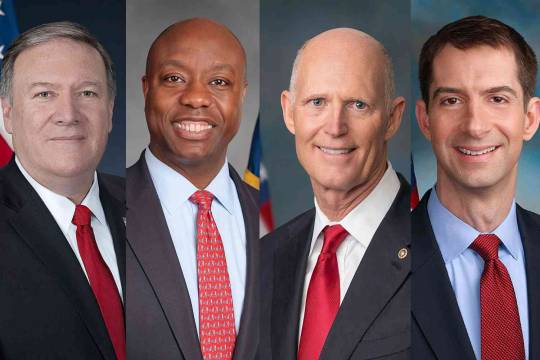
The Republican party in 1892 nominated President Benjamin Harrison and replaced Vice President Levi P. Morton with Whitelaw Reid of New York. The Democrats also selected the familiar: former president Grover Cleveland and Adlai E. Stevenson of Illinois. The Populist, or Peoples party, fielding candidates for the first time, nominated Gen. James B. Weaver of Iowa and James G. Field of Virginia.
The main difference between the Republicans and the Democrats in 1892 was their position on the tariff. The Republicans supported ever-increasing rates, whereas a substantial wing of the Democratic party pushed through a platform plank that demanded import taxes for revenue only. The Populists called for government ownership of the railroads and monetary reform, confronting these issues in a way the two major parties did not.
Cleveland, avenging his defeat of 1888, won the presidency, receiving 5,554,414 popular votes to Harrisons 5,190,801. Weaver and the Populists received 1,027,329. In the electoral college Cleveland, carrying the swing states of New York, New Jersey, Connecticut, and Indiana, garnered 277 votes to Harrisons 145.
Withdrew Before The Primaries
The following individuals participated in at least one authorized presidential debate but withdrew from the race before the Iowa caucuses on February 1, 2016. They are listed in order of exit, starting with the most recent.
Name
The following notable individuals filed as candidates with FEC by November 2015.
Name
Additionally, Peter Messina was on the ballot in Louisiana, New Hampshire, and Idaho.Tim Cook was on the ballot in Louisiana, New Hampshire and Arizona. Walter Iwachiw was on the ballot in Florida and New Hampshire.
What Makes The 2024 Presidential Election Unique
The lead up to the 2024 presidential election is different from past years because of former President Donald Trump. Hes eligible to run for a second term, and has publicly toyed with the idea while also weighing in on other Republicans he thinks could be the future of the party. If Trump does run in 2024, hed start out with unparalleled name ID and massive support, but if he doesnt, the field could be wide open for other Republicans hoping to win over his supporters. President Joe Biden said recently he expects to run for reelection in 2024.
Related
Golden Trump statue at CPAC 2021 was no graven image, according to the artist
This early on, wannabe candidates must raise their profiles, show their commitment to the party, and raise money, one Republican strategist said, to get on peoples radars even when your candidacy is in a holding pattern.
Some of the most visible 2024 presidential candidates will surely flame out long before the Iowa caucus, and theres always the chance that the next Republican nominee isnt yet considered a serious player . Theres a million and one things that will happen between now and then that will shape the race in ways we cant now predict, but the invisible primary that comes before any votes are cast has started.
Heres your very early guide to some of 2024s Republican presidential candidates, based on early polling, interviews with Republican donors and strategists and results from online political betting markets.
0 notes
Photo
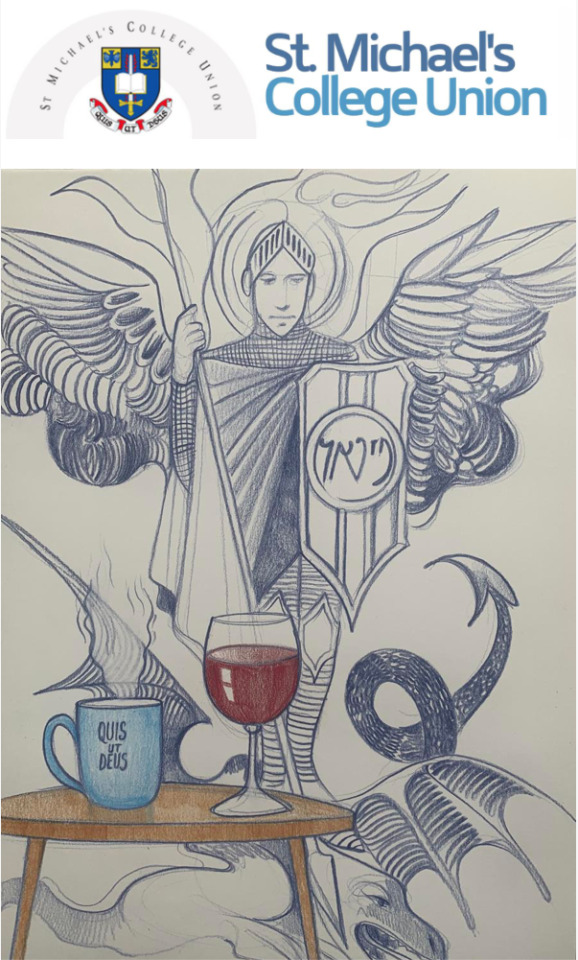
Dear fellow Past Pupils and St. Michael’s Community,
I hope you and your loved ones are safe and well.
We are delighted to launch The Sword Series, a new collaboration between the Union and the Flaming Sword Trust (learn more below). The Sword Series is a monthly online conversation with a member of our wider St. Michael's Community. In a relaxed virtual setting, each month our guest will share stories and insights from their life and work. Key themes will include the techniques that have helped our guests meet life's challenges and how our guests seek to express their values in their life and work.
You are invited to join us via Zoom as we launch The Sword Series with a very special guest, Prof. Jim Lucey at 7pm on Wednesday 31 March. Jim (class of 1977) is a leading psychiatrist, former director of St. Patrick's Hospital and recipient of the Union Award in 2015. Jim has recently published a book, A Whole New Plan for Living : Achieving Balance and Wellness in a Changing World.
Grab a glass of wine or a herbal tea and join us in conversation with Jim, as we explore his thoughts upon the themes and concepts behind his book and work.
Simply email [email protected] to register your interest and we'll send Zoom details.
We hope you can join us for what promises to be a thought provoking and enjoyable conversation.
Warm regards,
Stephen Taylor (Class of 1992)
Union President 2020/21
Robbie, John M, Alastair, John D & Philip.
Flaming Sword Trustees
The Flaming Sword Trust
The Flaming Sword is a charitable trust that helps St.Michael's College past pupils going through a difficult period in their lives by providing support, guidance and friendship. Those seeking support may need advice, moral support, practical assistance, help through a sudden life crisis or financial assistance. The Trustees are resourceful, discreet, non-judgemental and focused on providing meaningful assistance. Click here to learn more about how the Trust helps.
0 notes
Text
Shirley Abrahamson, Trailblazing Wisconsin Judge, Dies at 87

Shirley Abrahamson, an indefatigable jurist known for her activist voice and tart dissents who was the first woman on the Wisconsin Supreme Court and later its first female chief justice, died on Dec. 19 in Berkeley, Calif. She was 87.
Her son, Daniel, said the cause was pancreatic cancer.
Justice Abrahamson spent 43 years on the bench, 19 as the chief justice. She was long the only woman on the court, but when she retired in 2019 and moved to California, five of the seven justices were women. There are now six.
At Justice Abrahamson’s retirement ceremony, her friend Ruth Bader Ginsburg, the second woman to serve on the United States Supreme Court, said in a videotaped tribute, “As lawyer, law teacher and judge, she has inspired legions to follow in her way, to strive constantly to make the legal system genuinely equal and accessible to all who dwell in our fair land.”
Justice Ginsburg died in September.
In opinions, speeches and articles, Justice Abrahamson often wrote about the rights that state constitutions provide citizens — like protections against unreasonable searches and seizures — but the federal constitution does not.
“New federalism,” she wrote in the SMU Law Review in 1982, “describes the willingness of state courts to assert themselves as the final arbiters in questions of their citizens’ individual rights by relying on their own law, especially the state constitution.”
She was perhaps best known for her dissents, like the one in State v. Mitchell, a 1992 case in which the court ruled that the increased penalty a defendant could receive for a hate crime was unconstitutional. (The U.S. Supreme Court reversed the decision.)
“Bigots are free to think and express themselves as they wish, except that they may not engage in criminal conduct in furtherance of their beliefs,” Justice Abrahamson wrote. “The state’s interest in punishing bias-related criminal conduct relates only to the protection of equal rights and the prevention of crime, not to the suppression of free expression.”
She also opposed the court’s divided decision in 2015 to end the investigation into whether Gov. Scott Walker had illegally coordinated with conservative groups during the campaign to recall him three years earlier.
“Lest the length, convoluted analysis and overblown rhetoric of the majority opinion obscure its effect, let me state clearly,” Justice Abrahamson wrote. “The majority opinion adopts an unprecedented and faulty interpretation of Wisconsin’s campaign finance law and of the First Amendment.”
Justice Abrahamson had by then acquired a national reputation. In 1979, she was one of several female jurists considered by President Jimmy Carter as possible replacements for Supreme Court Justice William J. Brennan Jr. (who, as it turned out, stayed on the bench until 1990).
In 1993, Justice Abrahamson was on the short list to succeed Justice Byron R. White. President Bill Clinton chose Justice Ginsburg.
“She felt incredibly honored — and thought it was great fun — simply to have had her name floated as someone possibly under consideration,” Daniel Abrahamson said in an interview. “She expressed neither surprise nor regret at not getting the nod.”
Shirley Schlanger was born on Dec. 17, 1933, in Manhattan. Her father, Leo, and her mother, Ceilia (Sauerteig) Abrahamson, ran a grocery store.
At 6, Shirley declared her intention to be a lawyer. She would later say that having immigrant parents — they were both from Poland — taught her to believe that “this country was open” and that “no doors were closed.”
After graduating from Hunter College High School and New York University, she married Seymour Abrahamson and accompanied him to to Indiana University, Bloomington, where she got her law degree in 1956 and he earned a Ph.D. in genetics.
The couple then left for the University of Wisconsin, Madison, where she studied under the law school professor J. Willard Hurst, a pioneer in the field of legal history. She received a degree in legal history from the university’s law school in 1962 and was soon hired as the first woman lawyer at what was then known as La Follette, Sinykin, Doyle & Anderson, where she rose to be a name partner.
A legal generalist, she was best known as a tax lawyer. While working at the firm, she helped write the City of Madison’s equal-opportunity law and was director of the local chapter of the American Civil Liberties Union from 1967 to 1974.
She was named to the court by Gov. Patrick Lucey, a Democrat, in 1976, and was elected to 10-year terms in 1979, 1989, 1999 and 2009. As the senior member of the court, she became chief justice in 1996.
After her ceremonial swearing-in by William H. Rehnquist, the chief justice of the United States, she told the 1,200 people gathered at the state Capitol: “It is my prerogative as the state’s new chief justice to begin with a momentous announcement: The Green Bay Packers and Minnesota Vikings are tied. You’re going to be home in time for the second half.”
Justice Abrahamson helped make the court more accessible. During her tenure, it held its administrative meetings in public and she backed an educational program that brings high school students into the court to hear arguments.
Janine Geske, who served on the Wisconsin Supreme Court in the 1990s, recalled the erudition of Justice Abrahamson’s lengthy opinions (“each one of hers is a law school class”) and the excellence she demanded from her colleagues.
“When I first got to the court and circulated my first opinion,” Ms. Geske said in an interview, “I got a four-page, single-spaced memo telling me that it wasn’t strong enough. I remember gasping and feeling bad, but I learned that what she cared about was to strengthen an opinion even when she was on the defense. Some other justices didn’t accept that.”
Indeed, in 2015 the conservative majority on the court, with which she had been in increasing conflict, voted to replace her as chief justice with Patience Roggensack. They took this action after voters approved a constitutional amendment that ended the practice requiring the chief justice to be the most senior member by service.
“I publicly stated that I recommended the change because age does not necessarily mean brilliance or kindness,” William Callow, an opponent of Justice Abrahamson’s who served with her on the Wisconsin Supreme Court from 1977 to 1992, told The Capital Times in 2016.
Justice Abrahamson sued to block implementation of the amended law. A federal judge tossed out her lawsuit; she appealed but dropped the suit in late 2015, reasoning that pursuing it would take too long. She vowed to remain “independent, impartial, and nonpartisan, and help the court system improve.”
She retired a year after receiving her cancer diagnosis.
In addition to her son, she is survived by a grandson and a sister, Rosalind Sarlin. Her husband died in 2016.
Justice Abrahamson was known for the long hours she devoted to her work, which led her to eat at her desk, at speaking engagements and at restaurants with friends and colleagues. Her single-mindedness was noted by her husband, who spent time in Japan studying the effects of radiation on survivors of the United States’ detonation of atomic bombs on Hiroshima and Nagasaki.
“Whatever I leave for her in the refrigerator when I leave,” Professor Abrahamson, told The Associated Press in 1996. “is usually there when I get home seven months later.”
Multiple Service Listing for Business Owners | Tools to Grow Your Local Business
www.MultipleServiceListing.com
The post Shirley Abrahamson, Trailblazing Wisconsin Judge, Dies at 87 appeared first on Multiple Service Listing.
from Multiple Service Listing https://ift.tt/3oMpUaE
0 notes
Video
40 years ago – First Arrowhead by steve55126
Via Flickr:
Tuesday, April 15, 1975, Amtrak operated the first Arrowhead passenger train from Minneapolis to Superior, Wis. Sponsored by the State of Minnesota mainly because of Rep. Willard Munger of Duluth, the train made a special inaugural trip on April 15, with regular service beginning the next day. Gov. Patrick Lucey of Wisconsin rode the first train, as did Gov. Wendell Anderson of Minnesota, who got on at Bethel after flying in by helicopter after throwing out the first pitch at the Twins opener. The train left the Minneapolis GN Depot at 1:30 p.m. after speeches, including one by Amtrak President Paul Reistrup, who got off at Bethel. The first train was longer than normal with six cars and carried ex-Great Northern full length dome "Ocean View" - which is still used by Amtrak today. Power was AMTK E8A 334 (ex-BN 9936, Burlington 9943B) and E9A 411 (ex-UP 904). The one way fare was $8. That weekend the Northstar Chapter, NRHS sponsored a trip on the train leaving Friday April 18 and returning April 19, and was able to convince Amtrak to leave the dome car on so they could ride it. The train in various forms lasted 10 years, becoming the North Star in 1978, having its schedule flipped to leave Minneapolis in the morning, was extended from Superior to Duluth in 1977, and for a time combining with the a Twin Cities-Chicago train on an overnight schedule that brought sleeping car service to Duluth for the first time since the early 1960s. However, it seemed the state was never a big backer of the train, and it made its last run on Easter Sunday, April 7, 1985 after the state refused to fund it any more.
#arrowhead#amtk#amtrak#1975#minneapolis#superior#trains#passenger train#history#minneapolis great northern depot#minnesota
27 notes
·
View notes
Note
Where do you go at first when your over 18 and wanting to start hormones?
okay So there are options.
100% public route : you should go to your GP, explain that you’re trans and want to seek hormones and ask for a referall to the local mental health services. there, you want to receive a diagnosis of gender dysphoria and be referred to either St Columcille’s in Loughlinstown (Dublin) or Galway University Hospital based on where you are. The endocrinology units there prescribe hormones for trans people.
Private mental health services : Jim Lucey in St Patricks and Paul Moran in Loughlinstown and the “approved” mental health professionals that are trusted by the endocrinology units in Loughlinstown / Galway. Once you have a diagnosis, you can be referred to a public endocrinologist in Loughlinstown or Galway.
Private endocrinology : Galway University Hospital will offer private appointments at a price of course, and the reviews are good!
Online : GenderGP is an online private service that works with your own GP to prescribe hormones and monitor your levels. If you’re using a system like GenderGP it is recommended that you get on the waiting list for Galway / Loughlinstown so your care can eventually be transferred there so you’re not paying, and we don’t yet have many reviews of GenderGP.
50 notes
·
View notes
Text
Stats Perform Chief Scientist and Senior Data Analyst to Speak at Australia Sports Tech Conference
Stats Perform Chief Scientist and Senior Data Analyst to Speak at Australia Sports Tech Conference

Dr. Patrick Lucey and Tom Worville to Discuss Artificial Intelligence in Sports and the Significance of Data-Powered Storytelling in the EPL
SYDNEY–(BUSINESS WIRE)–Stats Perform, the revolutionary leader in sports AI and data, announced that Dr. Patrick Lucey, chief scientist, and Tom Worville, senior data analyst at Opta and OptaPro, will present at the Australia Sports Tech Conference at the…
View On WordPress
0 notes
Link
This is a review of the research conducted by Xinyu Wei, Patrick Lucey, Stuart Morgan, Machar Reid, and Sridha Sridharan applying random decision forest and other sports analytics methods. Strategy is the name of the game in tennis with players continually attempting to maneuver their opponents into weak positions in order to score points. The… The post Sports Analytics Methods – Random Decision Forest appeared first on Agile Sports Analytics.
0 notes
Photo

New Post has been published on https://toldnews.com/united-states-of-america/analysis-howard-schultz-needs-find-a-way-to-gain-traction-and-soon/
Analysis: Howard Schultz needs find a way to gain traction -- and soon
James A. Barnes is a member of the CNN Decision Desk and co-author of the 2018 Almanac of American Politics.
That is a challenging path, especially this early in the presidential campaign season.
Perot, a prominent businessman, sat down with CNN talk show host Larry King on February 20, 1992, as a reluctant candidate.
“I don’t want to run,” declared Perot. But after prodding from King, Perot allowed that if his would-be supporters put “skin in the game” by getting his name on the ballot in their states and promising to “stay in the ring after Election Day,” then the Texas billionaire businessman would seriously consider a run. The CNN switchboard lit up like a Christmas tree and Perot’s quixotic presidential campaign got underway.
Schultz’s potential 2020 independent bid is being unveiled to voters more than a year before Perot sounded his call on Larry King. Schultz, a past donor to Democratic candidates, says his party has moved too far to the left even though more centrist 2020 options like former Vice President Joe Biden, former Gov. John Hickenlooper and former New York City Mayor Michael Bloomberg (who was elected as a Republican and an independent) haven’t declared their intentions yet. While Trump has antagonized and aggravated many in his own party, no serious challengers to his re-nomination have emerged. But New Hampshire’s primary is almost a year off — a lifetime in politics.
And in 1992, when Perot was boosting his candidacy on television, there were fissures evident in both the Democratic and Republican ranks. Perot’s appearance on the King show came two days after New Hampshire voters jolted incumbent President George H. W. Bush by giving conservative commentator Pat Buchanan 38% of the GOP primary vote. They also gave long shot Democratic challenger, former Massachusetts Sen. Paul Tsongas, a primary victory over the eventual Democratic nominee, Bill Clinton. The political environment was ripe for a folksy upstart like Perot who railed against the seraglios of Washington: a recession alienated many Americans from Bush, while stories of marital infidelities and avoidance of the Vietnam draft, left just as many suspicious of Clinton. In June of that year, a Gallup Poll placed Perot ahead of both Bush and Clinton with 39% support.
Prior to Perot’s bid, third party presidential candidacies were typically born from an electoral schism in one or both of the major parities. In 1980, Illinois Republican congressman John B. Anderson rallied liberal Republicans to his banner but failed to capture any primaries (narrowly missing in both Massachusetts and Vermont) including that of his home state. On April 24, 1980, Anderson announced he’d run as an independent. In June of that year, after Ronald Reagan had wrapped up the GOP nomination, but Democrats were still bitterly divided between President Jimmy Carter and his challenger Edward M. Kennedy, Anderson peaked in popularity drawing support from 24% of those surveyed by Gallup. Ultimately, Anderson veered left naming former Wisconsin Democratic Gov. Patrick Lucey, a Kennedy supporter, as his running mate. He captured 6.6% of that November.
In 1968, it was the Democratic Party that was so divided over the Vietnam War and racial issues that incumbent president Lyndon B. Johnson decided to not seek reelection. The great presidential chronicler Teddy White recounted in his book on that tumultuous election, “there could be no doubt that millions upon millions of Democrats had forsaken the party of their fathers and gone elsewhere. And there was no doubt where they had gone: George C. Wallace.”
While Wallace hadn’t sought the Democratic nomination in 1968, he ran in the party’s 1964 Indiana, Wisconsin and Maryland presidential primaries, in the latter scoring 43% of the vote against LBJ stand-in, Sen. Daniel B. Brewster. From that experience, White observed, Wallace retained “a residual know-how of national campaigning, a feline feel for the contours of national politics that was to make him a major force in the presidential campaign of 1968.” Indeed, the segregationist Alabama governor running as the standard-bearer of the American Independent Party hit 21% in a September Gallup Poll. Wallace ultimately carried five Deep South states — the last independent to win any state — capturing more than 13% of the vote.
Schultz must gain traction among disaffected Democrats and Republicans and persuade them — along with a lion’s share of independents — that they have no options in either of the two major parties. Mobilizing that support a year before the primary season produces the kind of voter alienation and angst that has traditionally fueled past independent candidacies is a daunting task.
Already, major media organizations will start to test and track Schultz’s appeal. A recent CNN Poll conducted by SSRS found Schultz had some of the worst numbers of any potential candidate tested. Just 19% of voters said they were at least somewhat likely to support him if he were to run in 2020. Of that 19%, only 4% said they were very likely to support him. And even though almost half of all voters (44%) had never even heard of him, his net favorability rating (favorable – unfavorable) among those who could form an opinion of him stood at a quite poor -11 points.
If he can’t demonstrate that he’s rallying alienated voters in public opinion polls his candidacy could flag before it’s officially announced. Schultz is a billionaire, and he can afford to self-fund an advertising blitz—on cable TV and the Internet—that could boost his popularity. Sustaining that will not only be expensive but a gamble. History shows us that independent candidacies are forged and feed by the fires of the primaries, not the size of ones wallet.
#Howard Schultz needs to find a way to gain traction -- and soon - CNNPolitics#Politics#united state news#us headlines#us latest news#us local news#us national news#US news
0 notes
